A version of this post appears at GreenBuildingAdvisor.com.
From a distance, Feldheim looks like many other rural villages in Germany: a cluster of buildings surrounded by farmland and forests. The backdrop includes numerous wind turbines, but that’s not unusual in Germany’s breezy north. What is unusual is that there are two signs welcoming visitors to Feldheim: the typical yellow sign that is found at the edge of every village, and another in blue and white announcing that Feldheim is an “Energieautarker Ortsteil,” or an energy self-sufficient district. In 2010, Feldheim became one of the first villages in Germany to supply all of its own electricity and heat.
I visited Feldheim twice recently. During my first visit I met with Michael Knape, the mayor of Treuenbrietzen, the adjacent town to which Feldheim belongs. I had seen Mr. Knape give a presentation about Feldheim at a bioenergy village conference in Berlin, and I was eager to follow up with him. He suggested that we meet “at the construction site” in Feldheim. When I asked which one, he sounded surprised: “There’s only one.”
Finding the jobsite was not difficult. Feldheim has just one main street, and most of the village’s homes are on it. I pulled up to a two story building wrapped in scaffolding. Several masons were repointing brick and reproducing masonry moldings on the front of the building, while at the gable end, another crew was installing batts of mineral wool insulation on the walls. A large sign out front announced the Neue-Energien-Forum Feldheim, or “New Energy Forum Feldheim.” I noticed an electric vehicle charging station adjacent to the building.
As Mr. Knape and I settled into a temporary conference room that had been set up on site, I asked him “Why Feldheim? Why here?”
“In the early 1990s, ” he told me, “a graduate student named Michael Raschemann visited the village while looking for a location to install four wind turbines.” The conditions in Feldheim seemed promising because the area is windy, and the land surrounding the village is relatively flat. In his subsequent discussions with the villagers, Mr. Raschemann proved adept at addressing the villagers’ concerns and winning their trust. He even offered local residents the opportunity to invest in one of the four wind turbines — a wise investment, as it turned out. The story of Feldheim becoming energy self-sufficient is largely about the successful public-private partnership between Energiequelle, the company that Mr. Raschemann founded, and the village of Feldheim.
In 2000, the German government passed the original version of its Renewable Energy Law that provides attractive incentives for investments in renewable energy. Energiequelle, in consultation with the residents of Feldheim, developed a plan to build thirty-nine more wind turbines in two phases. With annual lease payments in the €15-20,000 range, these additional turbines represented a welcome boost for the local economy.
By 2004, the renewable energy industry in Germany was growing briskly, but the agricultural sector was suffering. Prices had fallen for the sugar beets and potatoes that were the staple crops of the farmers in Feldheim. At the same time, costs for fuel, fertilizer and animal feed were rising. Because Energiequelle had proven to be a reliable and generous partner for the village, the manager of the local agricultural cooperative approached Mr. Raschemann to explore ways in which the cooperative and the company might work together. These discussions led eventually to the building of a biogas plant that is jointly owned by the farmers and Energiequelle.
The technology underlying biogas fermenters is well-understood in Germany, where there are over 8,000 plants in operation. These systems typically create usable gas by fermenting a combination of agricultural waste and fuel crops. The raw materials that feed Feldheim’s biogas plant are all produced within a radius of about four kilometers, on land owned by the farmers’ cooperative.
The gas generated in the biogas fermenter is burned in a combined heat and power (CHP) plant to produce heat and electricity. Originally the farmers had intended to heat only the stalls of their pig-breeding operation with heat from the CHP plant, but once it was up and running, they realized that the system could provide most of the heat needed in the village. The villagers, the local municipality and Energiequelle formed a limited partnership to finance and construct a district heating system that uses heat from the biogas-fired CHP plant. The system includes a wood chip-fired boiler and two hot water storage tanks to help handle peak heating loads. The boiler is fueled with waste wood from logging operations in the cooperatively-owned local forest. The heating network supplies thirty-five homes, two town buildings, four large pig-breeding barns, and a machine shop.
The district heating system was commissioned in 2009, and cost €1,725,000 — including the wood chip-fired boiler. Of this amount, €138,000 was provided by the local limited partnership, €830,000 came from EU and state grants, and the balance was financed conventionally through a local bank. The owners of each of the thirty-five homes on the grid paid a one-time connection fee of €1,500. Their heating costs have been averaging 10-20% less than for fossil fuel-based alternatives. Perhaps more importantly, most of the money that residents pay for heat stays in the village, and heating costs are now largely independent of fossil fuel prices.
The energy-related developments in Feldheim have had a cascading effect. The decision to install a district heating system led to discussions about the village’s electricity grid. Could some of the power being generated in the wind park be fed directly to buildings in the village? The answer was a qualified “yes.” When the utility company that owned the existing power lines refused to allow the village to use those lines to distribute electricity directly from the wind park, Energiequelle fronted the money to pay for the installation of new underground power lines — and fiber optic cables. As with the district heating system, the connection fee paid by building owners for access to this local grid was €1,500. Residents pay 16.6 cents/kWh for electricity. Germany’s national average is about 26 cents/kWh.
The relatively low cost of electricity and heat was a factor in Energiequelle’s decision to build the production plant of a daughter company, EQ-Sys, in Feldheim. The company, which fabricates trackers for solar arrays, has twenty-three employees, most of whom live in and around Feldheim. Heat from the CHP plant keeps the production facility warm in the winter and — via an absorption chiller — cool in the summer. The solar trackers fabricated in Feldheim were used by Energiequelle in a large solar farm that it developed on an abandoned Russian military base north of the village.
My meeting with Mayor Knape helped to clarify the history, ownership structure and financing of the projects in Feldheim. However, there wasn’t time for a tour of the various installations. He suggested that I contact the New Energy Forum Feldheim — the non-profit in whose temporary conference room we were meeting — to set up a tour. Before we parted, I asked Mr. Knape about what comes next — where does he see Feldheim heading in terms of energy infrastructure?
“We are looking forward in the coming months to the completion of the New Energy Forum Feldheim, which will be an information and training center focused on renewable energy and energy efficiency. We also hope to have a large battery storage system installed in Feldheim later this year. The battery will be able to store excess electricity from the wind farm, and release it when needed to the public grid. But my main focus these days is on the town of Treuenbrietzen. I’d like to find ways to adapt the technologies used and lessons learned in Feldheim to the town — particularly to the historic town center.”
I returned to Feldheim several weeks later to tour the renewable energy installations. The group I accompanied was an international delegation that was being hosted for a week in Germany by the non-profit Bread for the World. The group included representatives from Vietnam, Kazakhstan, Egypt, Tanzania and Bolivia. After watching a Powerpoint presentation (in English, the common language), we headed out for the tour. Our guide was Kathleen Thompson, a British ex-pat who lives nearby.
We stopped first at the biogas plant. Technicians from EnviTec, the company that had installed the plant, were doing routine maintenance. Kathleen explained that the farmers who cooperatively manage the plant typically handle day-to-day issues, but that every 2000 hours (roughly every 3 months), professional technicians give the plant a tune-up.
On a daily basis, corn silage, rye grain and manure slurry are fed into a mixer, and then piped to the fermenting tank where the substrate remains for fifty days. Pipes conveying warm or cool water regulate the temperature in the tank, and the bacterial composition of the substrate is carefully monitored. Fermentation gas consisting mostly of methane and CO2 is collected from the top of the fermenter and piped to the CHP plant.
The biogas is burned in the engine of the CHP plant to power a generator that creates electricity which is then fed into the public grid. Heat from this process is transferred to the district heating system via water pipes. The sludge that remains after the substrate has been fermented is a high quality fertilizer that the farmers spread on their fields. The entire process is automated, for the most part. Daily responsibility for the biogas plant rotates among the farmers, who typically check on the operation several times a day.
The wood chip boiler is located a few hundred feet from the biogas plant. Heated water from the CHP plant flows to buildings in the village via a distribution system at the boiler. The boiler is equipped with two hot water storage tanks that help to accommodate spikes in hot water usage — for example during unusually cold weather. The wood chip boiler does not fire often, because heat from the CHP plant covers the village’s needs for most of the year.
After seeing the biogas plant and the wood chip boiler, we piled into a bus to visit the solar farm located between Feldheim and the town of Treuenbrietzen. During the Cold War, the Russian military had used the site as a communications center. When the Russians abandoned the buildings in 1994, Treuenbrietzen did not have the resources to make use of the site. Energiequelle purchased the site in 2004 for a nominal sum, invested about 1.7 million euros in building demolition and site remediation, and began developing the solar farm in phases. Although the solar farm is owned by Energiequelle, all of the PV panels are mounted on trackers produced in Feldheim by the company’s daughter firm, EQ-Sys.
As we wandered through the field of large column-mounted PV arrays, I asked a member of the group about other stops on their energy-related tour of Germany. One of the group’s visits had been to a nuclear power plant that was being decommissioned.
“The nuclear power plant’s output was roughly equivalent to that of the wind park in Feldheim,” he told me. “The plant took ten years to build, it operated for twenty years, and it will take twenty years to decommission. Makes wind power look pretty attractive, doesn’t it?”
The final stop on our tour was the wind park — or rather, two of the many wind turbines located on agricultural land just outside the village of Feldheim. As I have long been fascinated by these giant wind turbines, I was excited to see them close-up.
The first tower we visited was a 2.3 MW unit that has been in operation since 2005. Kathleen gave us particulars: 98 meters high to the hub, rotor diameter of 71 meters, etc. I was surprised to learn that the stacked rings that make up the tower are concrete until the uppermost section, which is steel. Two vertical holes in each column section are aligned so that steel cables can be installed that run the height of the tower. The cables tie the sections together, but they also allow for some flexibility in high winds. The 16 meter diameter base of the tower contains a transformer and inverters for managing the power generated, and a simple cable-suspended man lift for conveying technicians up and down. A vertical ladder along the inside of the tower provides emergency access.
The second tower we visited was one under construction. I marveled at the size of the track crane being used to hoist mechanical equipment up to the top of the tower.
This new turbine would have a capacity of 3.0 MW, which is apparently standard for the industry today. In the distance, we could see another, similar tower being erected.
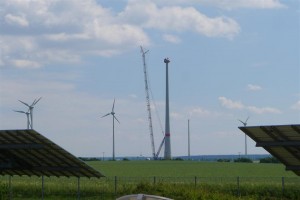
“repowering” 20 year old turbines – the two towers on either side of the crane are approximately the same distance away
The distant tower was part of a “repowering” project. Three of Feldheim’s original four wind turbines are being replaced. The original turbines were completed in 1994, and were rated at 55 KW. At 3.0 MW, the new turbines are over fifty times more powerful. Energiequelle owns some turbines that are rated at 7.5 MW. The wind industry has come a long way in twenty years.
Following the tour, I had a chance meeting at the EQ-Sys facility with Michael Raschemann, one of the two founders of Energiequelle. I was surprised both by his youthfulness and his accessibility. When I asked about the absorption cooling system that used heat from the biogas plant to keep the EQ-Sys factory cool during the summer, he happily showed me the system’s components. On the shop floor, he also explained to me various exhibits-in-progress that would be housed in Feldheim’s New Energy Forum.
“All that you have helped to achieve here in Feldheim is impressive and admirable,” I told him. “I’d like to think that communities in the US could also become energy self-sufficient. But how feasible is it to replicate Feldheim’s success without generous government subsidies and a deep-pocketed partner like Energiequelle?”
He considered the question and answered carefully.
“I think it comes down largely to energy prices. In Germany, new wind parks are producing power for 4 to 5 cents per kilowatt hour, which is on par with coal plants that burn lignite [inexpensive but highly-polluting brown coal]. Power generated by large solar farms continues to drop in price, and is now in the 8 to 10 cent per kilowatt hour range — making the newest PV competitive with gas-fired power plants, and within striking range of coal plants. As costs for renewable energy continue to drop, many things will become possible.”
I thanked him for his time, and for helping to demonstrate in Feldheim what may one day be possible to achieve in villages around the world.

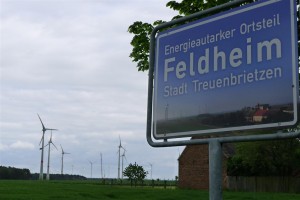
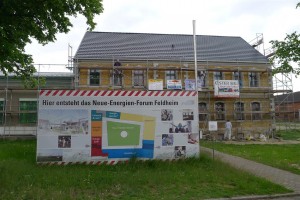
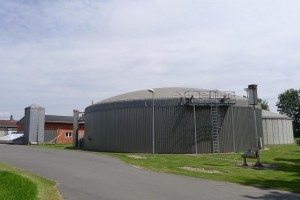

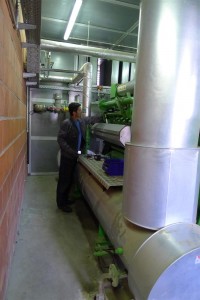
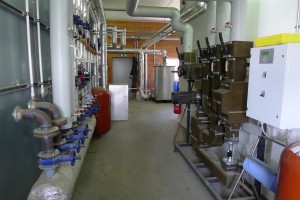
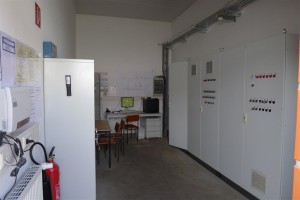

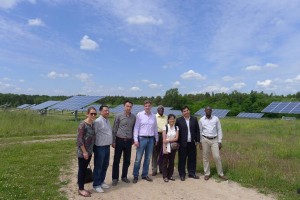
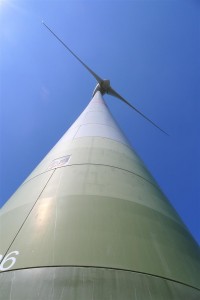
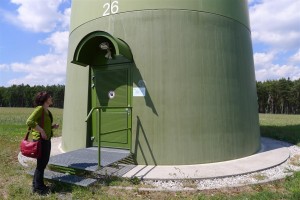
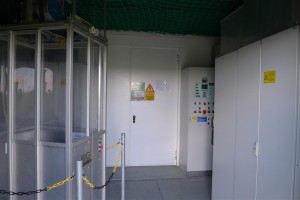
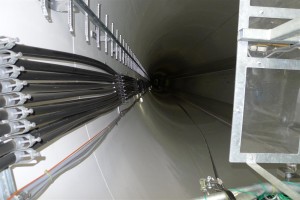
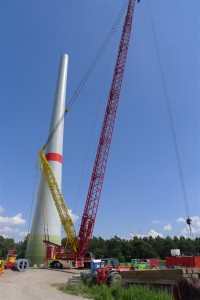
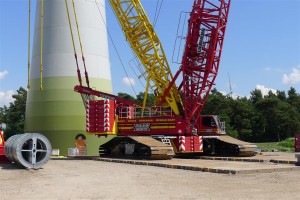
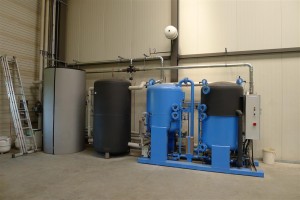
Wow Andrew!! This is very impressive. And your writing is so good. thank you.
Miss you guys
Paula
Andrew, I think you should testify at the next set of congressional hearings about renewable energy resources. Once again, you present the information with such clarity and passion, a winning combination. Looking forward to seeing you back in Walpole very soon.
Rutherford